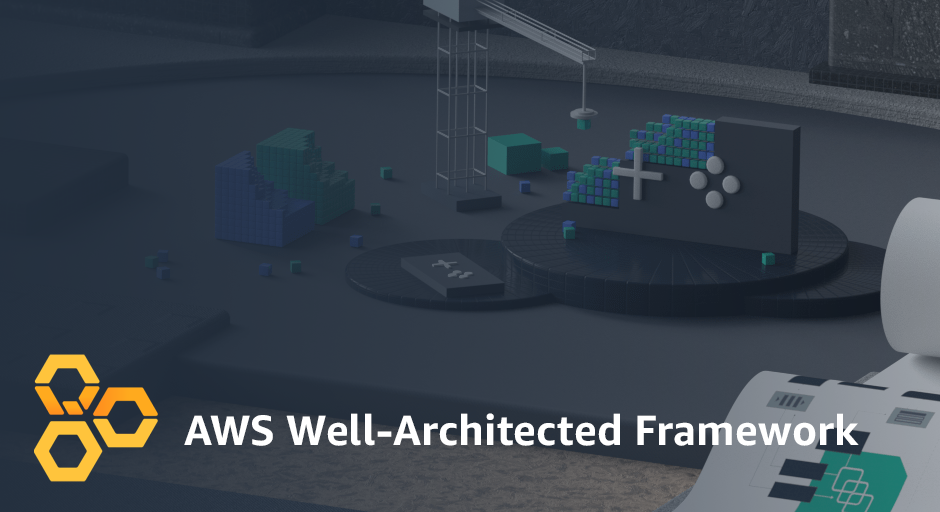AWS for Games Blog
Introducing the Games Industry Lens for the AWS Well-Architected Framework

As the Games Industry grows, cloud technology will continue to play an important role in supporting nearly every aspect of the game development lifecycle. Globally distributed game development teams depend on scalable infrastructure to build and test their games; players expect game developers to deliver fun and engaging social experiences; and analytics teams require tools to crunch large data sets of game play and player logs to understand behavior in order to deliver game improvements. These are just some of the many ways that our customers are already utilizing AWS to build, run, and grow their games.
Today, we’re excited to announce the launch of the Games Industry Lens of the AWS Well-Architected Framework. For years, we have been supporting games industry customers to develop, launch and scale their games that are built and running in the cloud, including some of the world’s largest games serving millions of players globally. The AWS Well-Architected Framework provides prescriptive guidance for customers to assess their workloads and identify best practices based on five pillars — operational excellence, security, performance efficiency, reliability, and cost optimization. While this general guidance is relevant to all customers, we wanted to deliver tailored recommendations for cloud-based games based on our experiences and lessons learned supporting these unique workloads.
What is the Games Industry Lens?
The Games Industry Lens is a collection of customer-proven design principles and best practices that help you adopt a cloud-native approach to building and operating your games. These recommendations are based on insights drawn from our experience working with our games industry customers and our own Games technology specialist communities. The Lens is designed to align with and provide recommendations across the Five Pillars of the AWS Well-Architected Framework:
- Operational excellence focuses on best practices for deploying and operating cloud-based games at any scale, including best practices for preparing for game launches and ensuring you have the right operational procedures in place.
- Security focuses on guidance for protecting your game infrastructure and your player experience with appropriate preventative and detective controls, and incident response procedures.
- Reliability provides recommendations to recover from infrastructure or service disruptions, dynamically acquire computing resources to meet varying demand, and mitigate disruptions such as misconfigurations or transient network issues. Key topics include: (1) agree on the peak player concurrency and system availability scalability targets required to meet business projections, (2) define scaling policies to accommodate changes in demand automatically without impacting availability, and (3) measure your reliability and its impact on player experience by defining key performance indicators (KPIs).
- Performance efficiency focuses on guidance for selecting the right game infrastructure resources and hosting strategy, and how you utilize monitoring to measure game performance.
- Cost optimization includes best practices for optimizing your game environment to reduce costs, monitoring and attributing costs to game features, and selecting the appropriate resources to use.
Who should use the Games Industry Lens?
The Games Industry Lens is intended for organizations that develop, publish, and operate games and gaming platforms. We believe the lens will be valuable regardless of your stage of cloud adoption, whether you’re launching your first game in the cloud, migrating a game to the cloud, or looking to improve your architecture for an existing cloud-based game. The material is intended to support customers in roles such as chief technology officers (CTOs), game studio technical directors, architects, developers, and operations team members.
The Games Industry Lens can help you make the appropriate design decisions in line with your business requirements and based on the lessons learned from other customers that have launched their games on AWS. Applying the techniques in this Lens to your architecture can validate the resiliency and efficiency of your design or provide recommendations to address the gaps that are identified. We expect customers to use the Lens as a supplement to the AWS Well-Architected Framework.
Next Steps
With the release of the Games Industry Lens, we encourage our customers to download and read the document, as well as implement and test their workloads in accordance with the recommendations provided.
As you read the lens, we would appreciate your comments and feedback to help us improve its scope and quality. We will continually refresh the content as we identify new use cases, challenges, and applications for the games industry.
You can find the Lens whitepaper at the AWS Well-Architected Website and can contact your AWS Account team for more information.